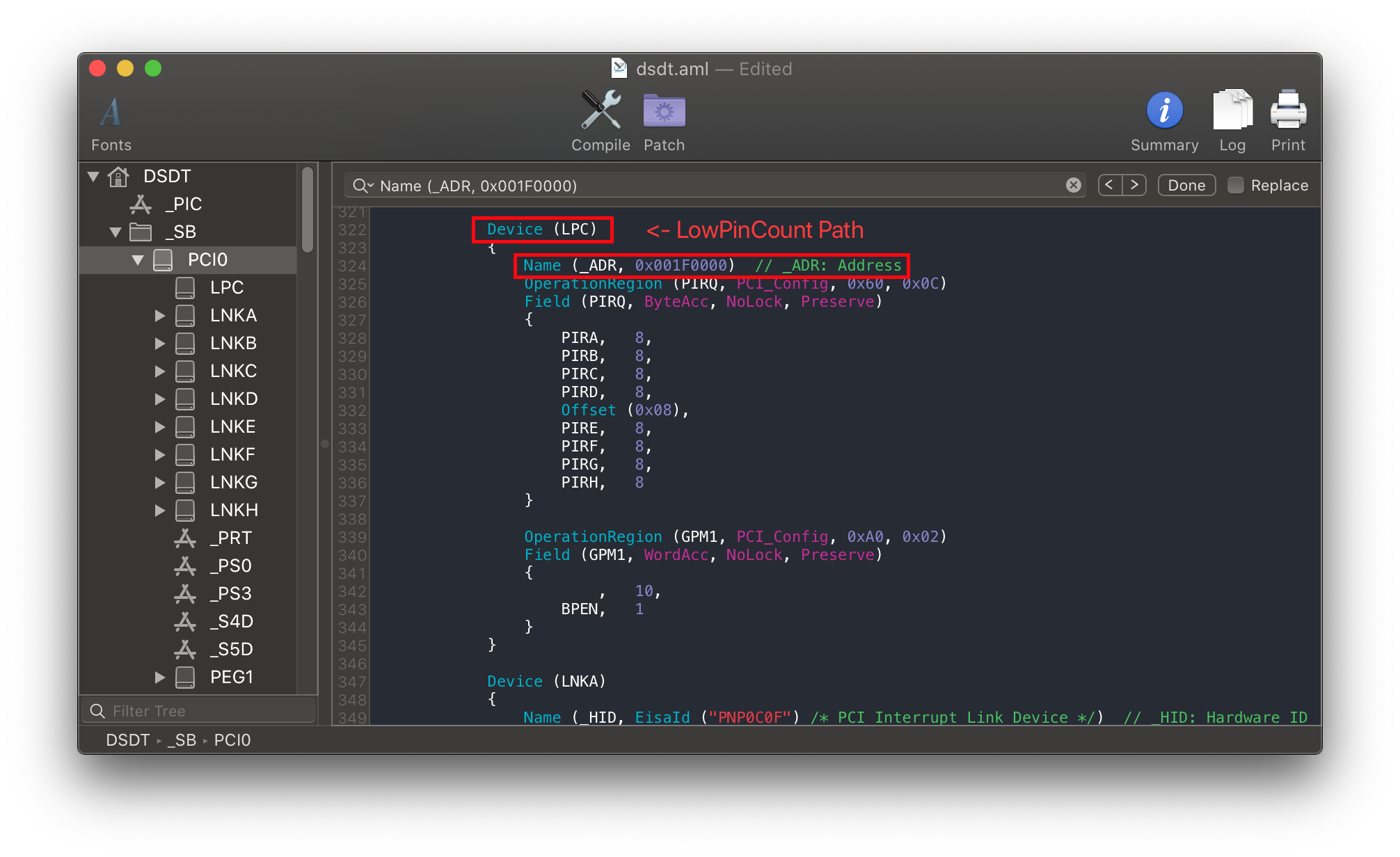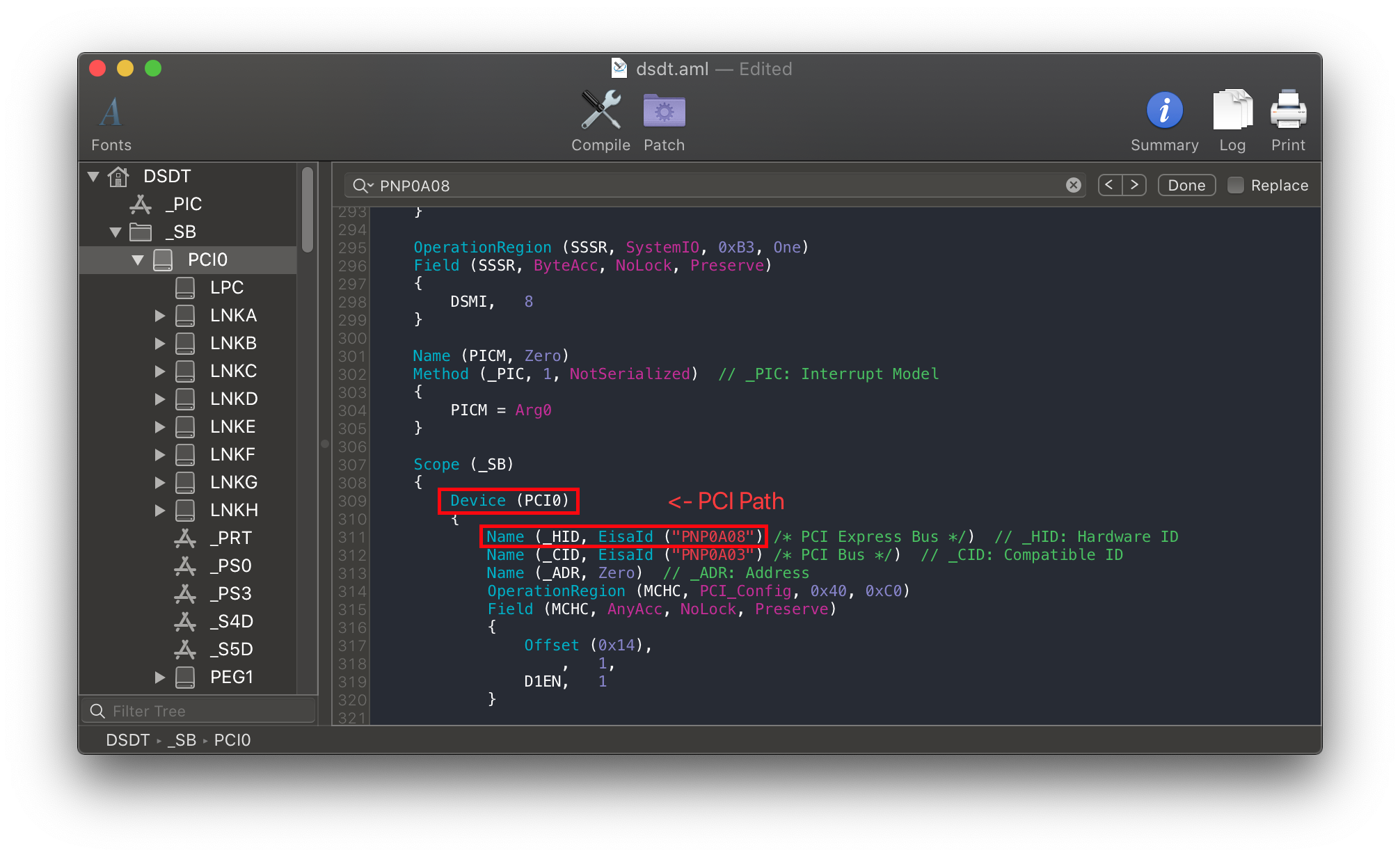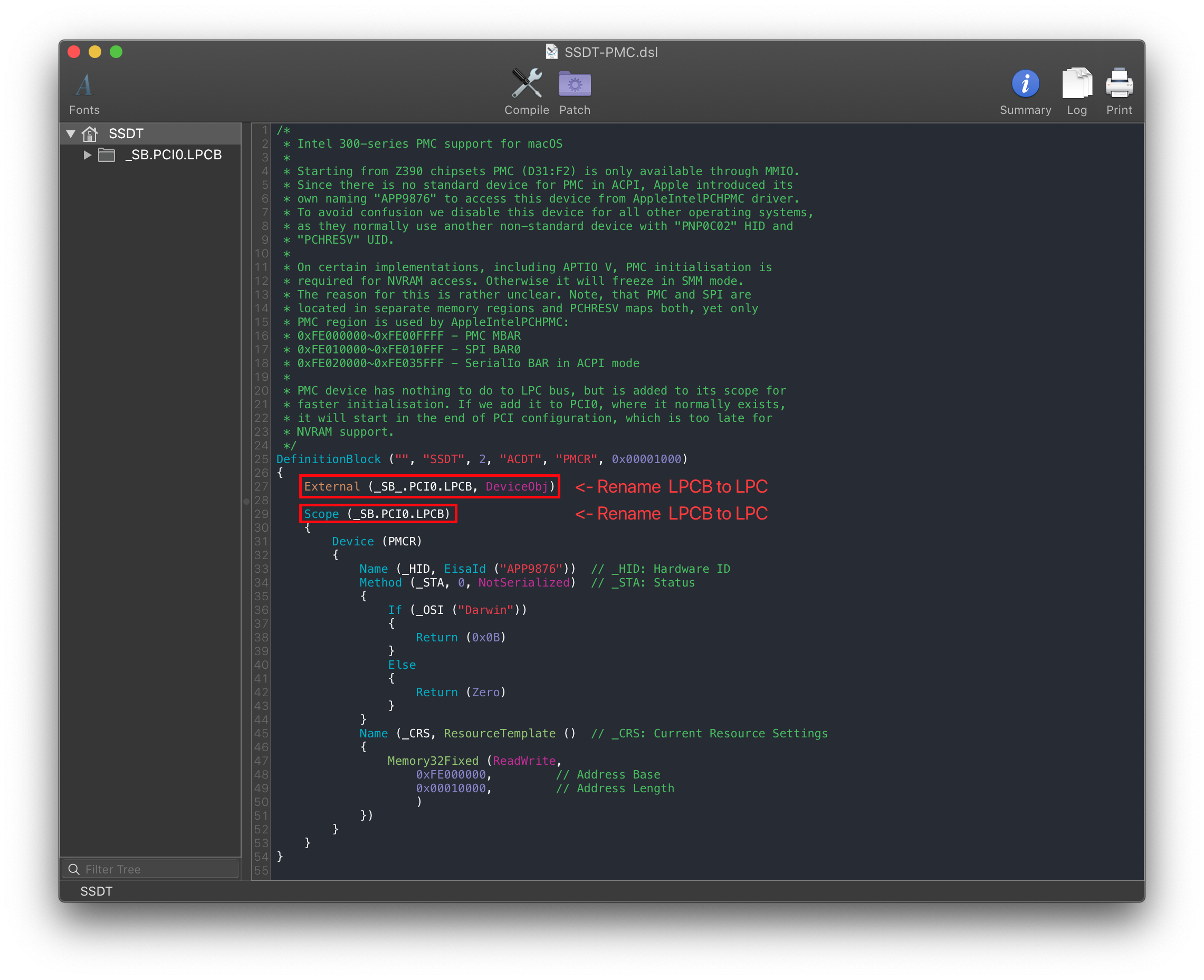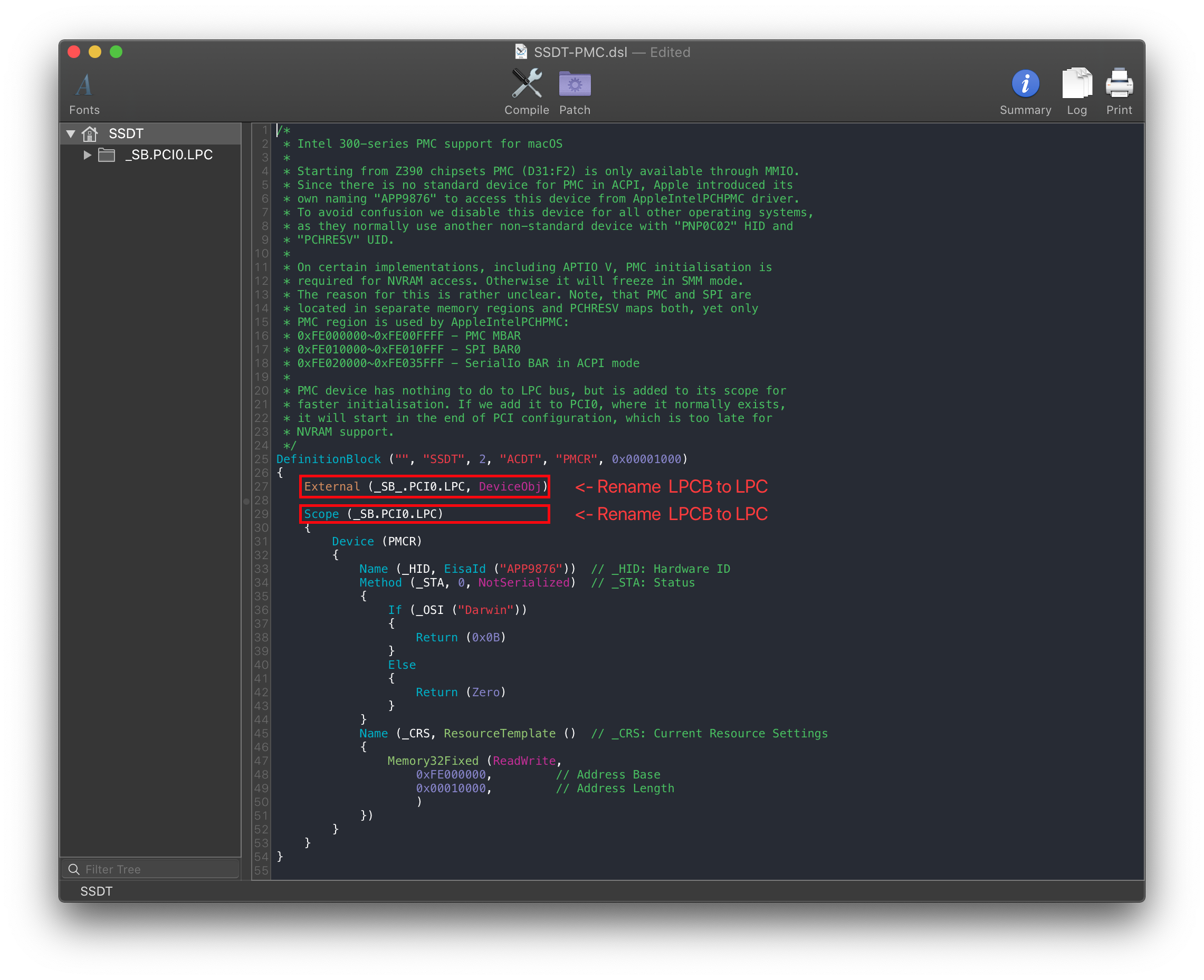Fixing NVRAM (SSDT-PMC)
What this SSDT does
This SSDT is required for all "true" 300 series motherboards(Z370 is excluded), it specifically brings back NVRAM support and requires very little configuration for the end user.
- B360
- B365
- H310
- H370 (HM370 shouldn't require this)
- Z390
10th gen motherboards do not need this SSDT, NVRAM's native on these platforms.
Methods to make this SSDT
The main ways to make this SSDT:
Prebuilt
By far the easiest method, all you need to do is download the following file:
Main things to note with this method:
- Bit Bloated
- There's ACPI naming for most common paths, this means there's added delays in boot times(though unnoticeable to most as it's generally less than 0.5 seconds longer)
- Doesn't really teach you anything
- For most, this doesn't matter. But to some knowing what makes your hackintosh tick is part of the journey
SSDTTime
The second involves using SSDTTime which automates most of the process. See here on how to use it: SSDTs: Easy Way
To get the SSDT-PMC, run the following:
7. Dump DSDTthen run5. PMC
This will provide you with some files, the main one you care about is SSDT-PMC.aml. The DSDT and .dsl are only left for referencing or verification.
The main things to note with this method:
- Doesn't really teach you anything
- For most, this doesn't matter. But to some knowing what makes your hackintosh tick is part of the journey
Manual
Finding the ACPI path
Finding the ACPI pathing is quite easy actually, first open your decompiled DSDT you got from Dumping the DSDT and Decompiling and Compiling with either MaciASL(if in macOS) or any other text editor if in Windows or Linux(VSCode has an ACPI extension that can also help).
Next, search for the following:
- Finding the LowPinCount path:
- Search
Name (_ADR, 0x001F0000)
- Search
- Finding the PCI path:
- Search
PNP0A08(If multiple show up, use the first one)
- Search
You should get something like the following show up:
| LPC Pathing | PCI Pathing |
|---|---|
 |  |
Now with the pathing, you can head here: Edits to the sample SSDT
Edits to the sample SSDT
Now that we have our ACPI path, lets grab our SSDT and get to work:
By default, this uses PCI0.LPCB for the pathing. you'll want to rename accordingly.
Following the example from above, we'll be renaming it to PCI0.LPC:
External (_SB_.PCI0.LPCB, DeviceObj) <- Rename this
Scope (_SB.PCI0.LPCB) <- Rename this

Following the example pathing we found, the SSDT should look something like this:
External (_SB_.PCI0.LPC, DeviceObj) <- Renamed
Scope (_SB.PCI0.LPC) <- Renamed

Compiling the SSDT
With the SSDT done, you're now ready to compile the SSDT!
Wrapping up
Once you're done making your SSDT, either head to the next page to finish the rest of the SSDTs or head here if you're ready to wrap up:
